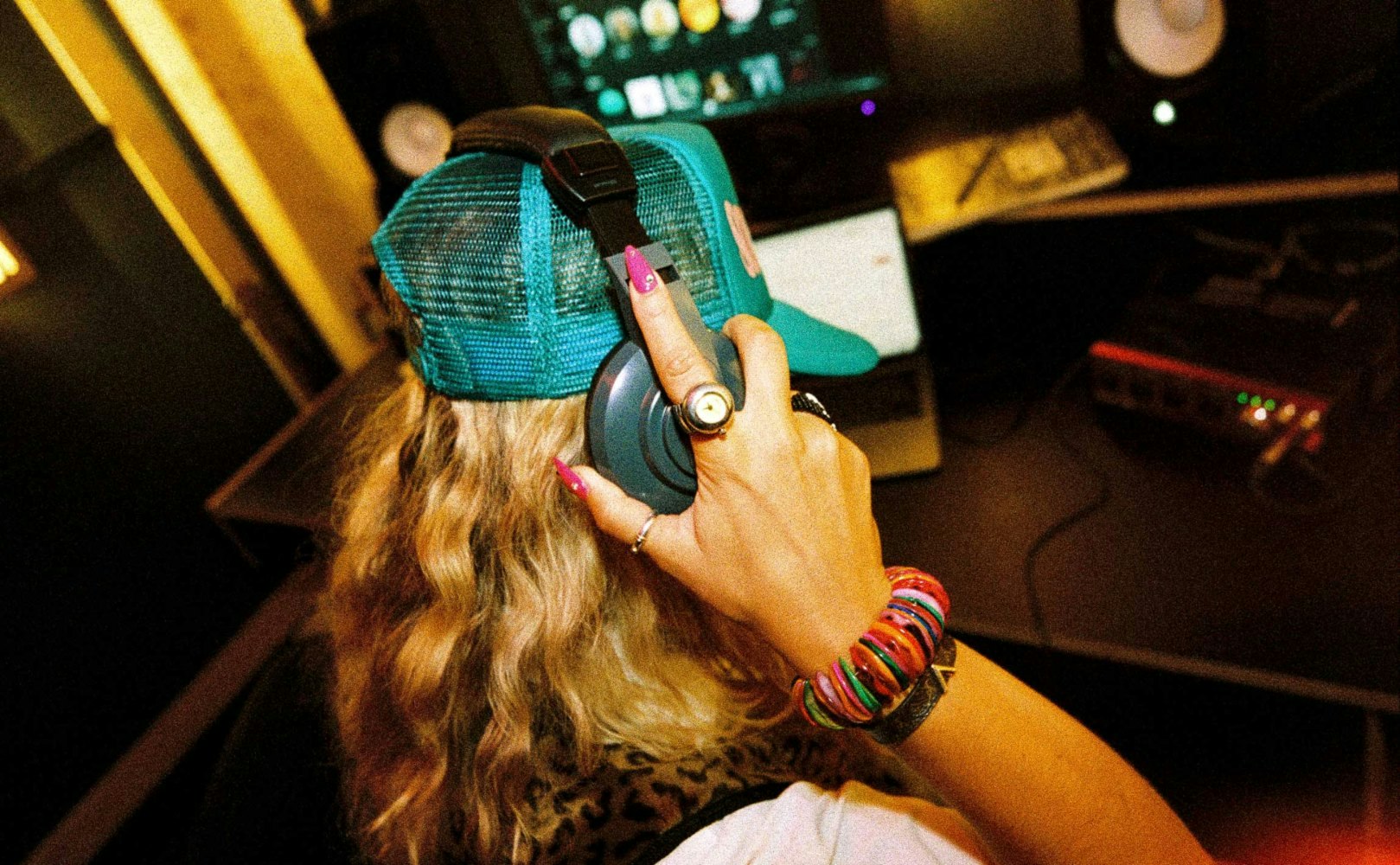
■ Features
Spotify is the most popular music streaming platform in the world. Here's how to use it to grow your fan base and promote your music.
Whether you’re just starting out or your local rehearsal studio is your second home, promotion campaigns will always be one of the most important parts of releasing music as an independent musician.
If one thing has become clear since the advent of streaming, Spotify has a chokehold on the music industry, meaning most of your promotion should be focused on Spotify in particular. Here's how to incorporate Spotify in your music marketing strategies.
I think it's important to outline the pros and cons of using Spotify in your music career. Ultimately, I'd say that it is absolutely worth promoting your music on Spotify, but you need to follow the right steps.
All independent artists should be promoting their music using Spotify. Spotify is streaming's global frontrunner, accounting for 31% of all music streaming service subscribers. Utilising Spotify correctly unlocks huge potential for organic growth of fan bases.
The runner up, Apple Music, accounts for less than half of the subscribers at only 15%. Amazon comes in at third at 13%, tied with Chinese platform Tencent. Looking at the numbers, it’s a no-brainer: Spotify rules the world of music streaming, and that is something independent artists should not take lightly.
You should never pay for plays on Spotify and you should never buy Spotify followers. Sites selling guaranteed plays typically add your music to playlists that are followed by bots and provide fake streams. Doing this could get you in trouble and stunt your growth in the long run. However, there are also many legitimate ways that you can pay for music promotion which we cover below.
There are many playlist submission tools that you can pay to use that will bump your streaming numbers up, but the listeners don’t actually exist. These services will use bots to stream your music.
Yes, Spotify can detect bots. If your listener activity looks suspicious to Spotify, and they find out your listeners are bots, they will not hesitate to punish you.
You can absolutely still successfully promote your music on Spotify as an independent artist without resorting to bots and fake streams, and it’s something independent artists must do if they want to see growth.
It can take years to build up a Spotify following. Success very rarely happens overnight, even for those who seem to have popped up out of nowhere. The good thing is that Spotify is a platform that wants to help artists to succeed, and they even provide some tools to help you do so.
The first thing you should be focusing on if you’re trying to promote music on Spotify is getting your Spotify For Artists account set up.
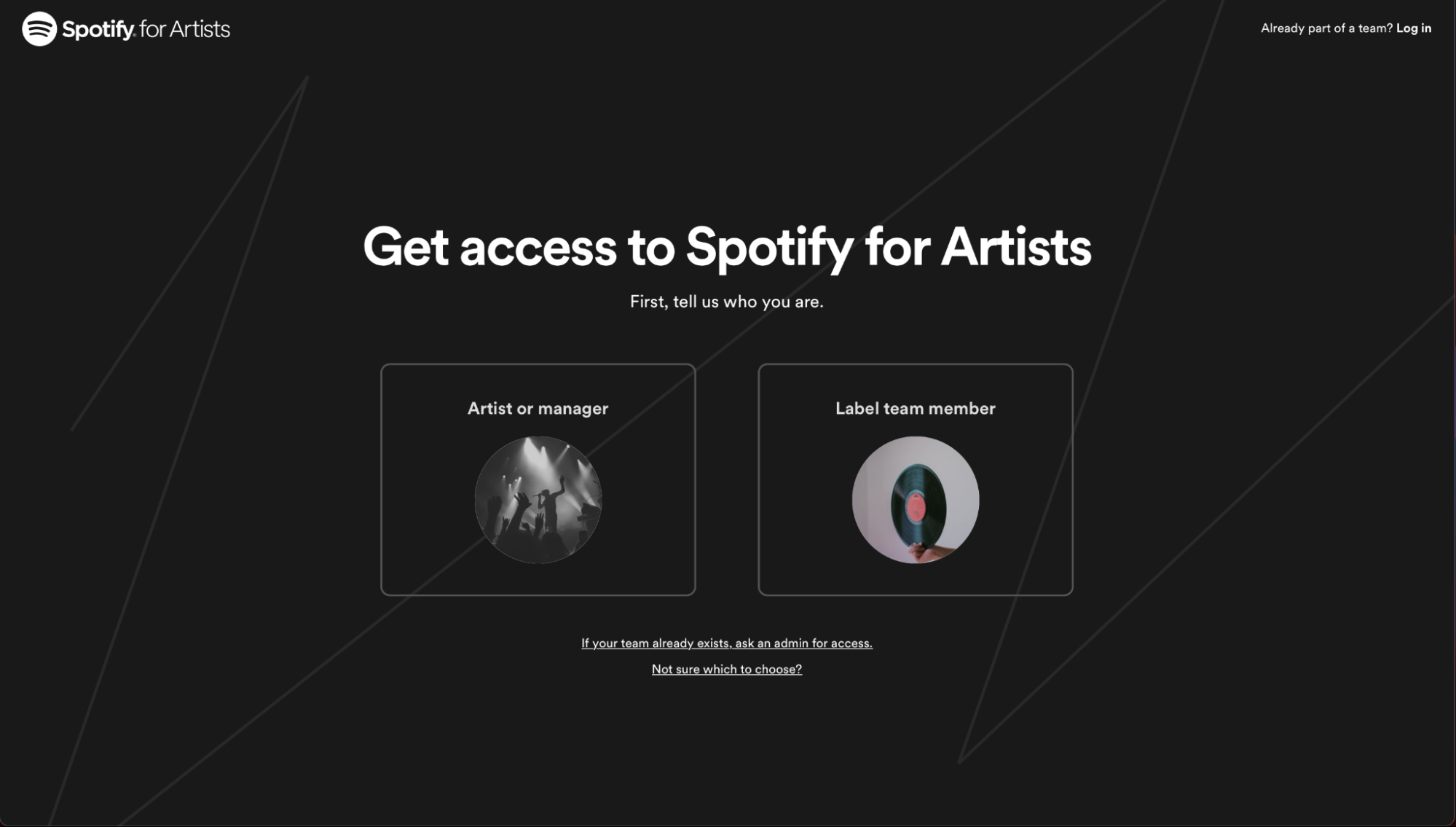 Spotify for Artists Registration Page
Spotify for Artists Registration Page
In order to set up your artist profile, you need to register and become verified, which means claiming your artist page and proving that you are that artist or are a manager or label in charge of that artist.
You can verify your Spotify for Artists profile easily by connecting your social accounts (i.e. Instagram, Twitter). Once Spotify receives your claim, they will verify it and you will now be in charge of your artist page on Spotify.
Once you've got your Spotify for Artist account active, you need to set it up.
You want your page to be set up to look just as professional as an artist whose page is run by a record label. That means writing a great artist bio, uploading pictures, creating user playlists, linking your social media, and even offering merch.
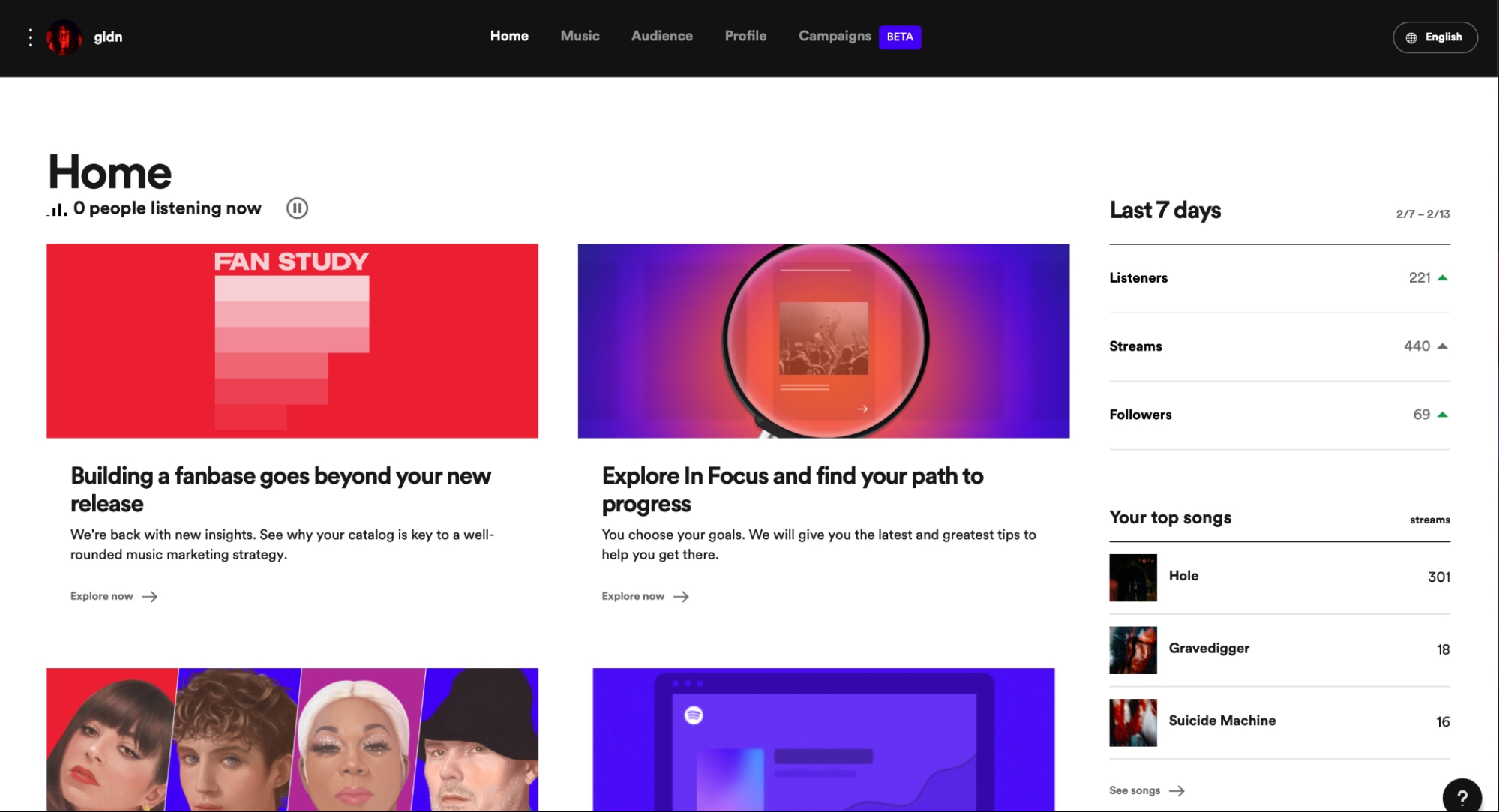 Spotify for Artists Home Page
Spotify for Artists Home Page
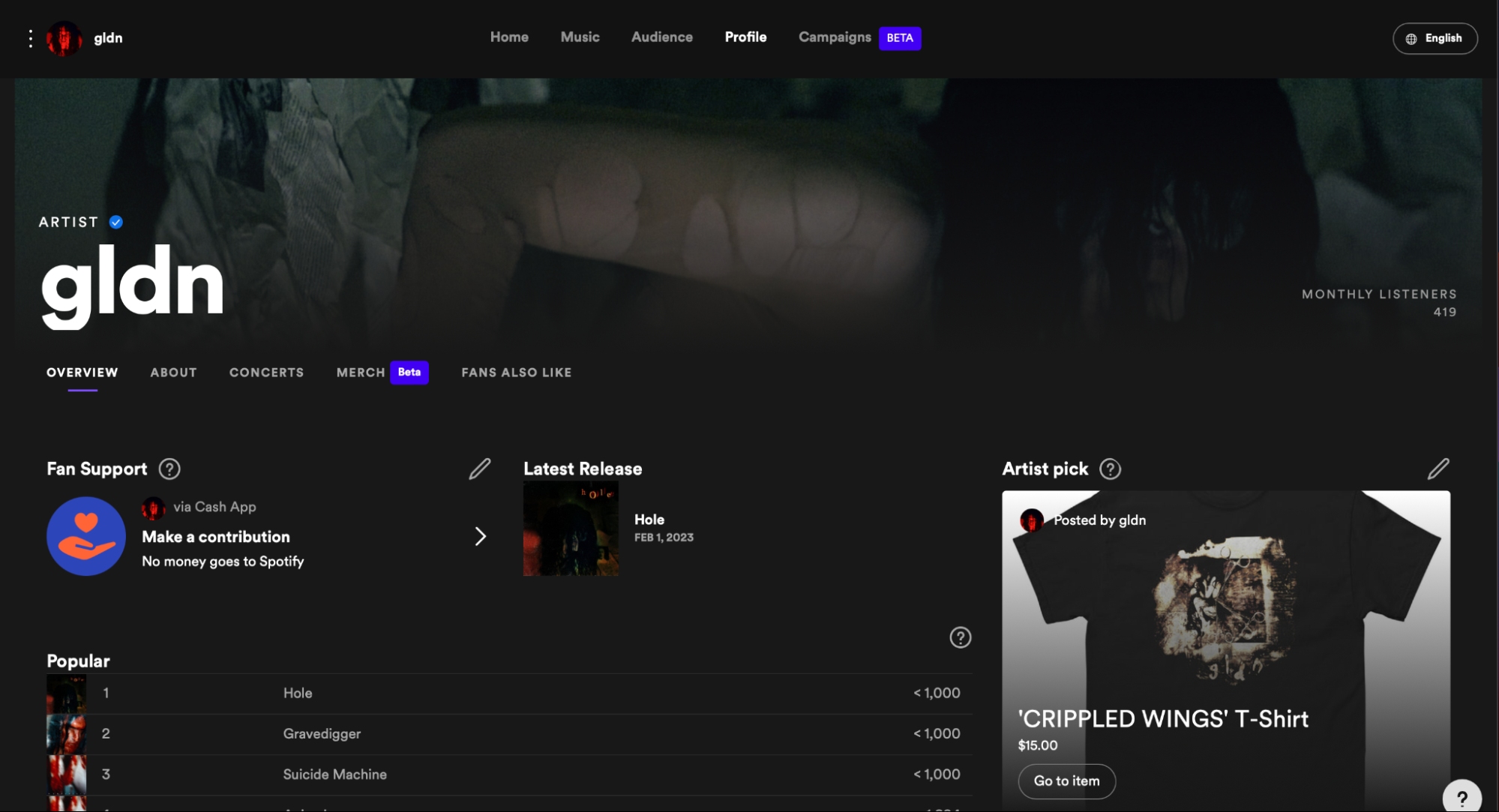 Editing your Spotify artist page
Editing your Spotify artist page
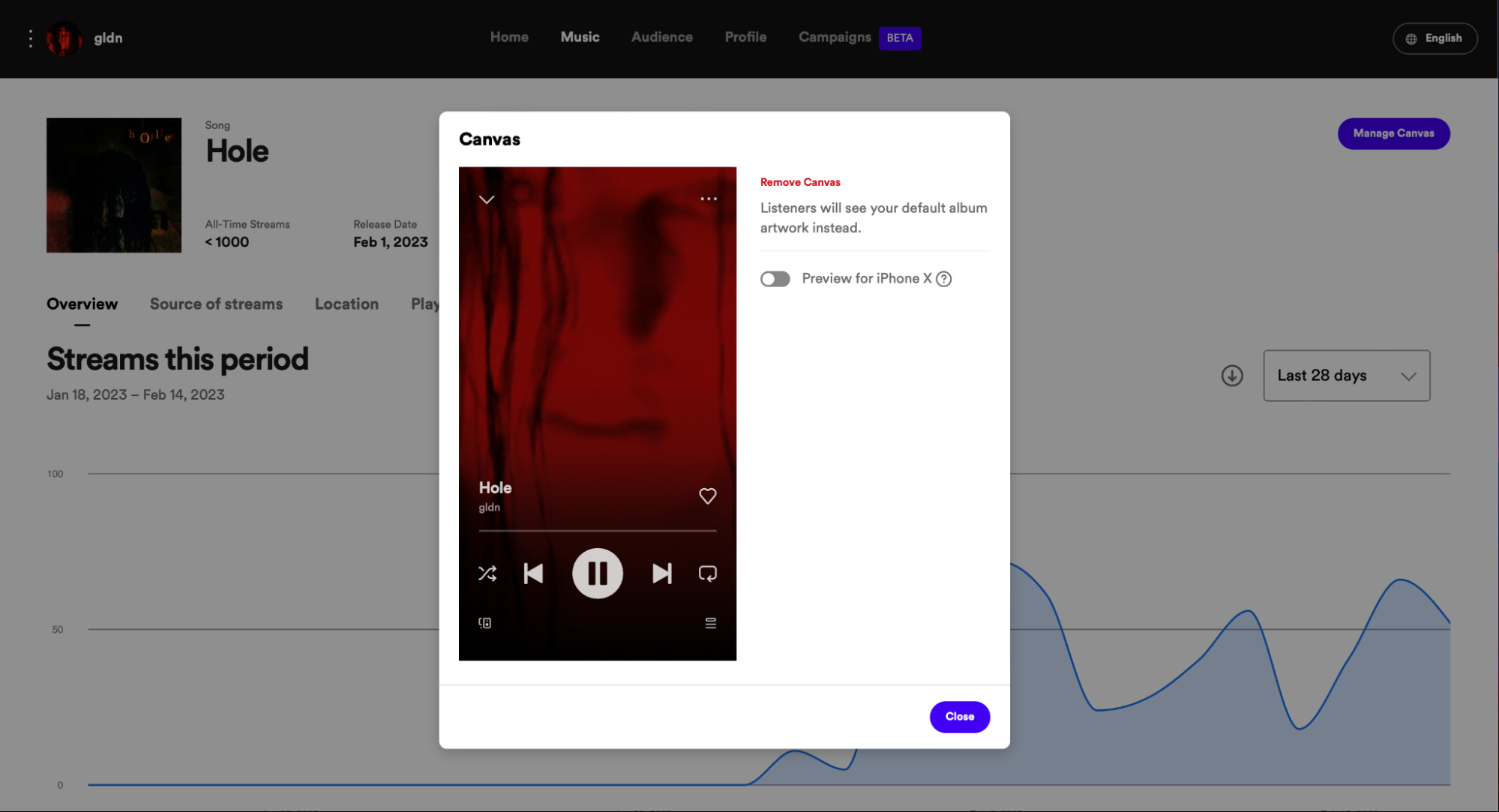 Editing your Canvas
Editing your Canvas
Spotify’s search algorithm represents a considerable part in the success of any music marketing campaign nowadays. Without having a good understanding of how it works, every effort put in place to promote your music on Spotify can easily be wasted.
Once you begin making the right moves, the Spotify algorithm will work in your favor. It’s there to help you, and once you understand it, you can take advantage of it. It’s not an exact science, at least on the artist’s side, but reasonable assumptions can be made about it by way of observation.
The most important thing you must understand about the algorithm has to do with frequency of releases. Spotify recommends one release every 6 to 8 weeks. After that, the algorithm is no longer really working in your favor.
So in order to take full advantage, you must be releasing consistently every month to month and a half. This sounds like a lot, but look at it this way: the music industry standard for releases has changed. It is more focused on singles than ever before, which means to compete, you need to be releasing singles regularly. Rather than releasing one single before an album and then dropping the entire thing in one go a month later, why not release it one song at a time. Even if your tracklist only has 8 songs, that is at least a year’s worth of releases.
Even if you don’t release every song as a single, you can pick the 5 best songs and release them monthly leading up to the album dropping. This will benefit you because you will be showing the algorithm that you are consistent. Additionally, because listeners are growing more and more accustomed to more frequent releases, this will keep you at the forefront of their minds.
Something that may come as a surprise to those new to Spotify is that each song has a popularity score. This score can help the algorithm know whether or not to recommend you, and it can also help you when it comes to getting your music onto editorial playlists (the popular playlists that Spotify itself curates).
So how is the popularity score of a song calculated? Simply put, it can be calculated by the number of streams, how recently those streams happened, and how those streaming numbers compare to the rest of the music on Spotify. This is why it’s pretty imperative to promote your music as much as possible when it’s released. You want to show the algorithm that it should be recommending your music.
By and large, pre-save campaigns are not considered the most effective promotional tool. You never want to seem desperate for streams or fans because this will always rub people the wrong way. However, for those who already have a small fan base built up, they can be a wonderful way of knowing who your core audience is. Even given the fact that there are better ways to promote your music, pre-save campaigns are still a valuable offering as an independent artist. There are many third-party music promotion services that allow you to do this for free, such as ToneDen.
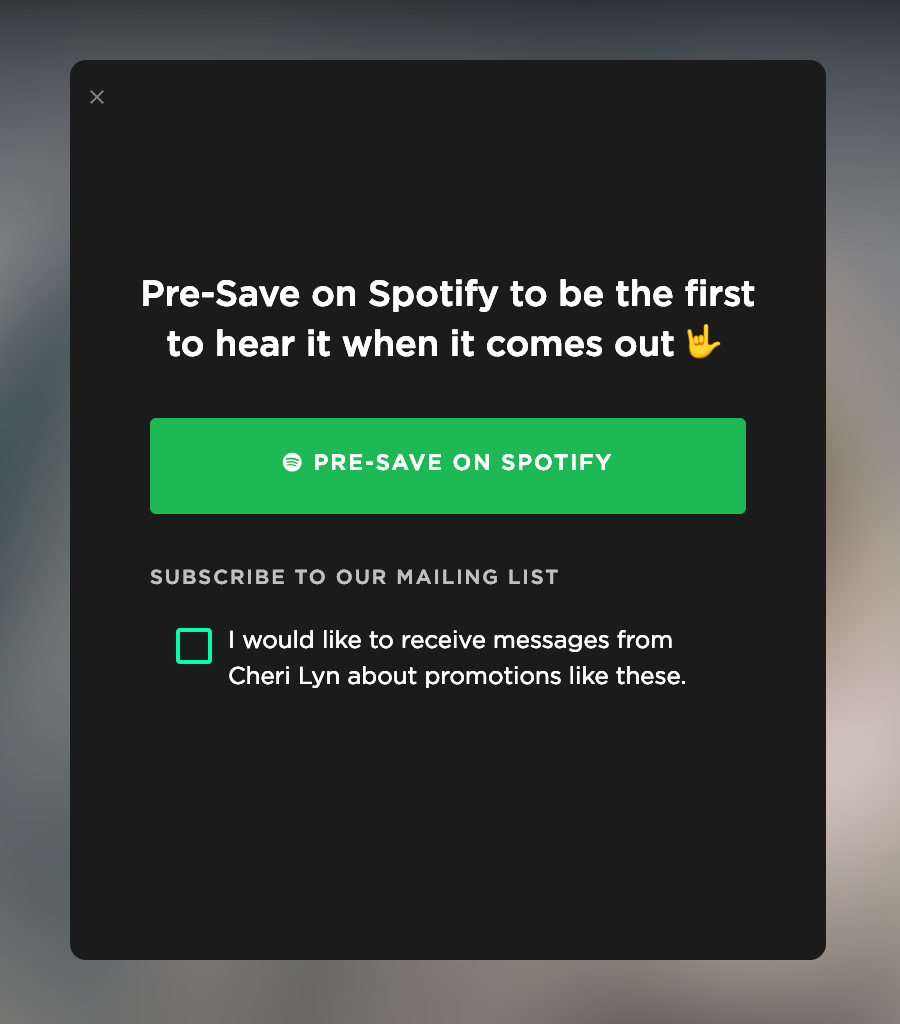 Pre-save campaign example
Pre-save campaign example
Learning how to promote music on social media is essential, even if you're not normally a big fan of Instagram or TikTok.
A good example of this is your link in bio. What you put there matters. Is it just your website or a link to your profiles on other social media platforms? If so, that doesn’t really cut it anymore. It needs to be something that, when opened, immediately grabs the viewer’s attention, both visually and in terms of the content it offers.
The best way to do this is using a third-party link in bio service, like Koji or Linktree. Put a video as your background. Match the colors of the font to the video. Link all of your socials, your newest music, and your merch. Make your link in bio a one-stop-shop for everything anyone could ever need to know, see, or hear about you.
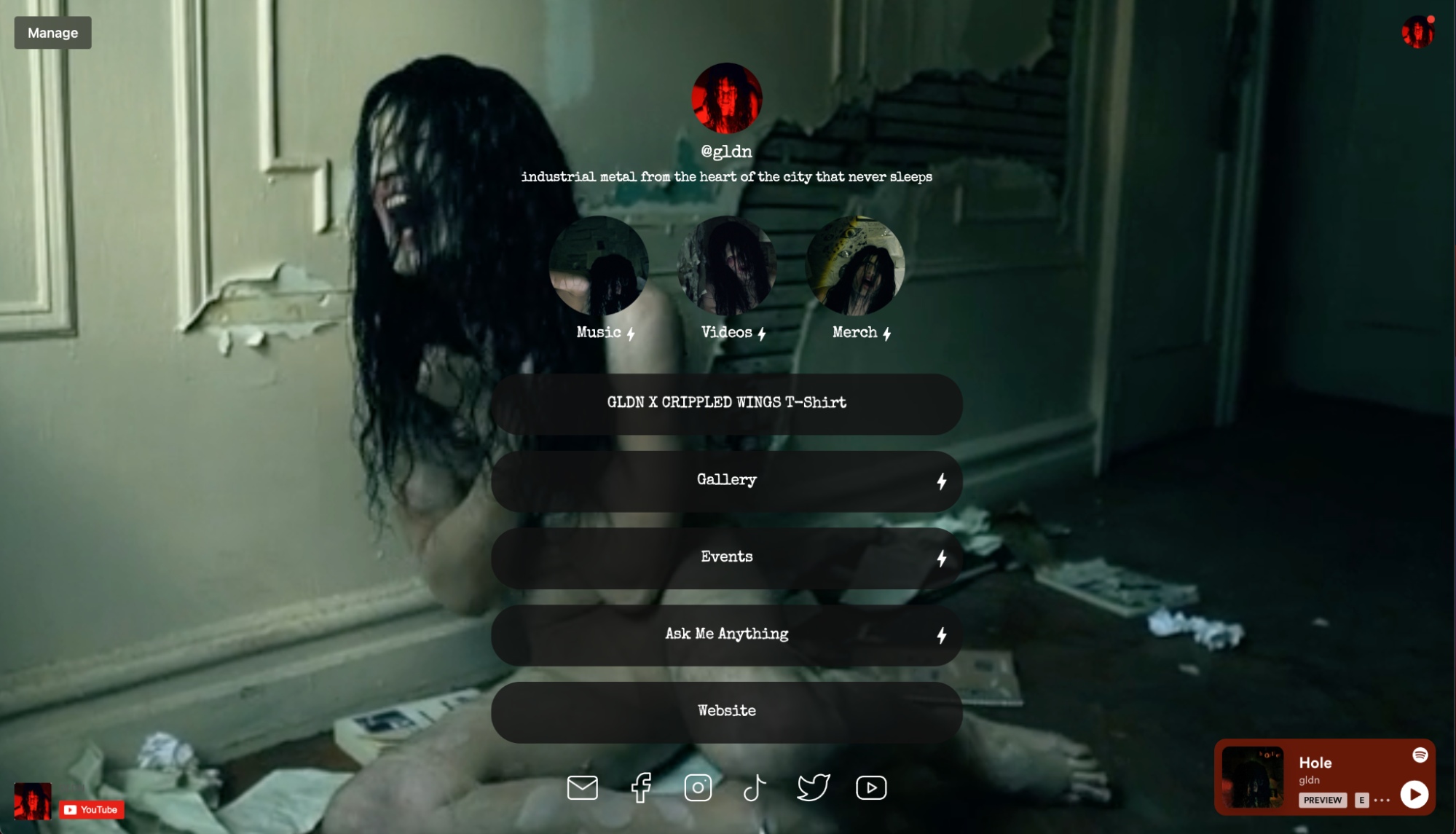 Link In Bio Example
Link In Bio Example
Another way to use social media to promote your music is to engage with your audience. Don’t have an audience? Start engaging with your target audience. Figure out what kinds of people would like your music and begin following those people and interacting with them. Also, you should follow fellow musicians that are in a similar genre and reach out to them. Eventually, you will create a symbiotic relationship wherein you can help each other succeed and find a larger audience.
There are several paid options that you can take advantage of to promote your music directly through Spotify.
Marquee is a tool offered to artists who have reached a certain threshold of listenership. An artist must either have received 5,000 plays in the last month or have over 1,000 followers. Once this threshold has been reached, artists can create a full page, sponsored recommendation that will appear to users who have listened to you in the past. There are many benefits to the tool, which boasts 10 times the ROI of other social ads.
This, much like the ad center on Meta or Boost options on TikTok and Instagram, allows you to create an ad that will appear to Spotify users. This may provide some new listeners, but the cost could be considered prohibitively expensive for independent artists. The minimum you must spend in order to run an ad on Spotify is $250.
Luckily, there is a much better, much cheaper way to promote your music: playlists.
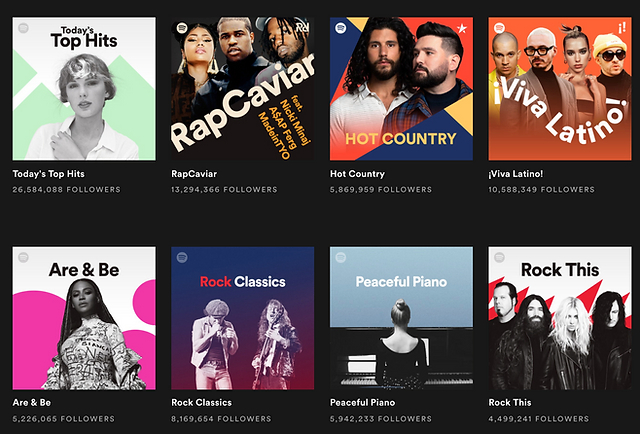 Spotify Editorial Playlists
Spotify Editorial Playlists
As mentioned earlier in the article, Spotify curates a plethora of its own editorial playlists. These generally have millions of followers. For some featured artists, these playlists can catapult their music careers and cement their place in the industry. Regardless of the outcome, getting on editorial playlists is an important goal to work toward. Pitching yourself for these playlists is something any artist can do through their Spotify for Artists page, and you are allowed to pitch once per release.
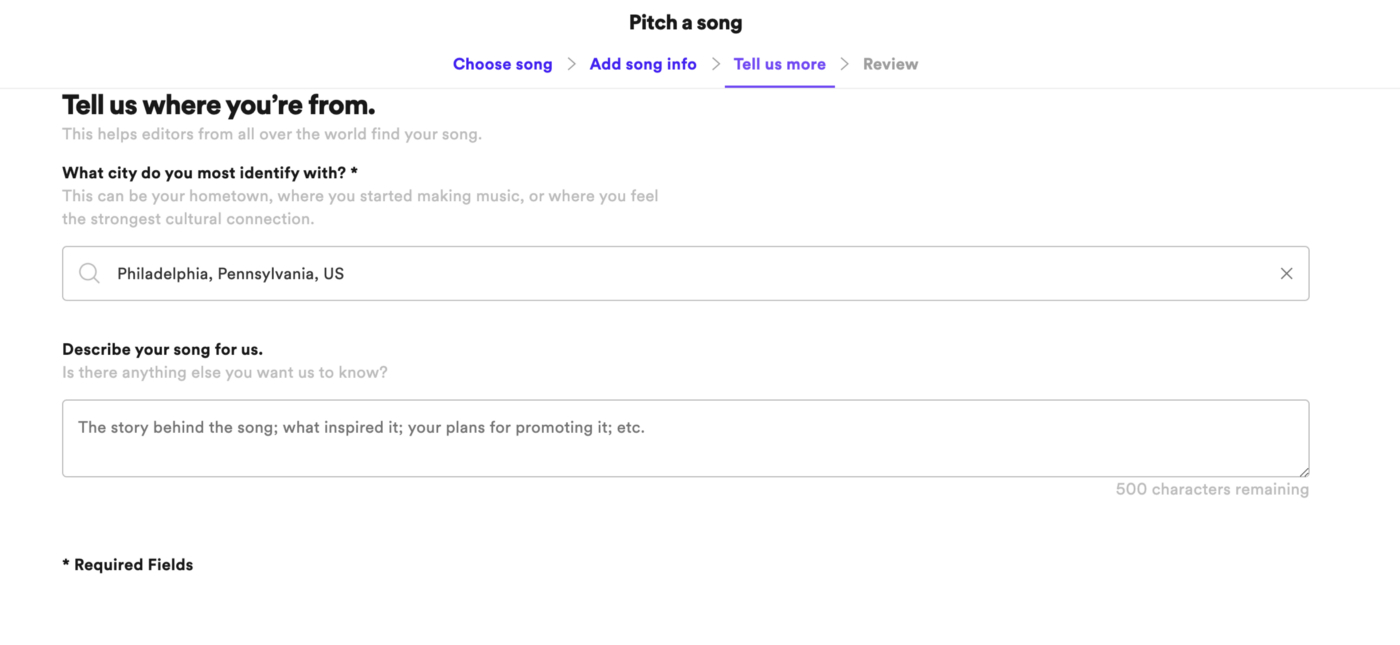 Spotify Playlist Pitching Form
Spotify Playlist Pitching Form
There are several things you need to do in order to increase your chances of success:
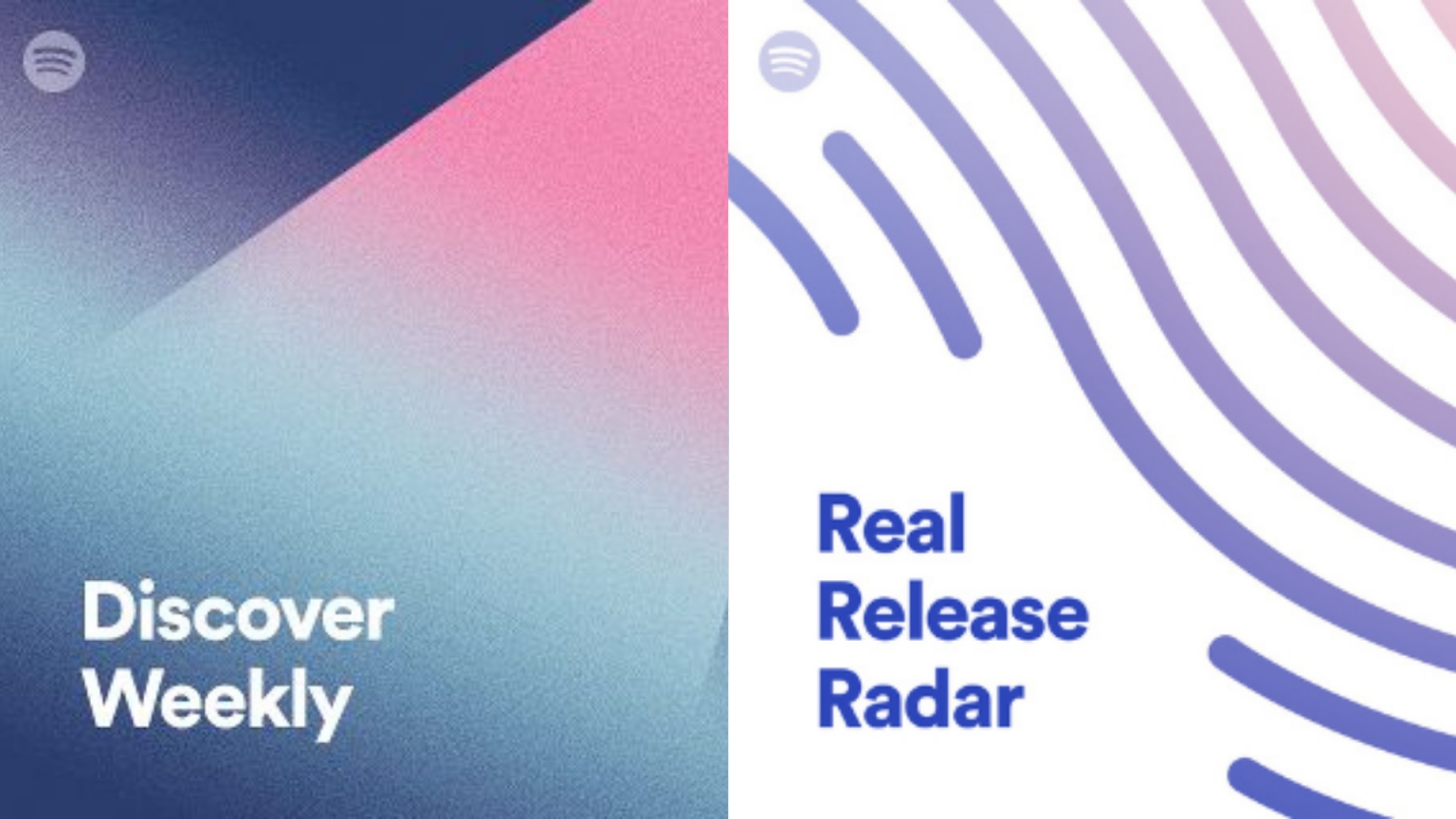 Spotify Algorithmic Playlists
Spotify Algorithmic Playlists
Another important thing to consider is algorithmic playlists, which are things like “Discover Weekly”, “Release Radar”, and “Daily Mix”. Luckily, Spotify has made it as simple as possible to appear on algorithmic playlists for your listeners – if you submit your release for an editorial playlist, you will show up in algorithmic playlists. This does not mean you must be placed on the editorial playlist – simply submit your release.
💡 Get all your first-party streaming and social stats in one place with Viberate for Artists. Special Offer: Pirate.com users enjoy a 30% discount! Use code PIRATE30 at checkout.
One of the most important things you can do as an independent artist who doesn’t yet have an audience is to submit to independent music curators. These are music fans (or music artists) like you and me that have curated their own playlists outside of Spotify’s influence or algorithm.
The playlists may have far fewer followers – usually in the thousands instead of the millions – but if one of your tracks gets a playlist push from an independent curator, you'll realise they are just as valuable as the ones created by Spotify's editorial team.
If your song is placed on a playlist with 50 songs and 5,000 followers, there is a high likelihood that your music will gain a lot of traction.
There are several ways to submit to these playlists. For one, you can simply find playlists you feel you would be a good fit for, get the contact information of the playlist owner, and pitch your song to them via email or social media. There are, however, an ever-increasing number of playlist pitching websites that you can use, which we will discuss in a later section.
As previously stated, you can also start your own playlists. On them, it would be a good idea to include your music alongside the music of those in your genre that you would like to be associated with. This will not only help the algorithm suggest you to listeners of those artists, but also help your listeners know the kind of vibe and community you are trying to build through your music.
We have already covered some of the ways you can promote your music on social media, but what do you need to prepare in order to do that?
If there’s one thing listeners love, it’s a good story. Have you ever seen an artist release a song and they reveal too much of what’s happening behind the scenes? Or maybe they reveal that the song was just something totally random they came up with that doesn’t really mean anything. While that can occasionally be a charming way to talk about your music, it’s more important that you have a compelling story about how the song came to be. What do the lyrics mean? How did you come up with the idea for the song? These are all things that you can share leading up to the release (with teasers) that will make a compelling reason for people to listen to your music.
You must remember that image is extremely important; as such, your visual elements must be high quality and attention grabbing. Have you shot a cover image for your new single or album? Use the rest of the images to build up to the release, creating an evolving story that your listeners can follow until the release.
Videos are a necessity in this day and age, as well. The advent of TikTok and Instagram Reels means that videos posted on those platforms perform the best in terms of engagement, by far. So, if you haven’t created any promotional video material, consider doing so before your release so you can properly promote on social media.
It doesn’t have to be something with a huge budget, either. There are so many tools at your disposal that can create high quality video content with no money required whatsoever. You don’t have the budget for a music video? Ask your friend to come and film you on the street, walking and lip syncing to your song, edit it in one of the many video editing apps, and post it in the time leading up to the release.
Think about the content your favorite artists use to promote their music. How can you take that idea and use it in your own way? Whatever it is, it should be something that can immediately catch someone’s eye and hold their attention. For example, you could create a TikTok video talking about the meaning of the song. Keep it short and keep it interesting. Only provide the most important details because people don’t have the attention span for much more.
Much like making your own playlists, collaborating with other artists will tell the algorithm who to group you with and who to suggest your music to.
If you collaborate with someone, there is a high likelihood that the algorithm will begin to suggest you to their fans. Who are the artists that you want to be associated with? Think of someone at a slightly higher level than you and forge a relationship with that artist. And in the spirit of not being a one-sided relationship, promote that artist’s music on your social media channels, as well. Go to their shows. Post about them. Include them on your playlists. Make sure they know that you are interested in coming up together, not just getting a leg up from them.
If you’ve searched “spotify promotional tools” or anything similar, you may have found yourself a little confused. Which of the tools that show up are useful? Which ones are scams? Can a company really promise a certain number of streams?
Allow me to cut through the noise for you: there are absolutely some useful and legitimate tools you should be using every time you release new music. While we can’t possibly list them all in one article, here are a few you will likely find to be very helpful:
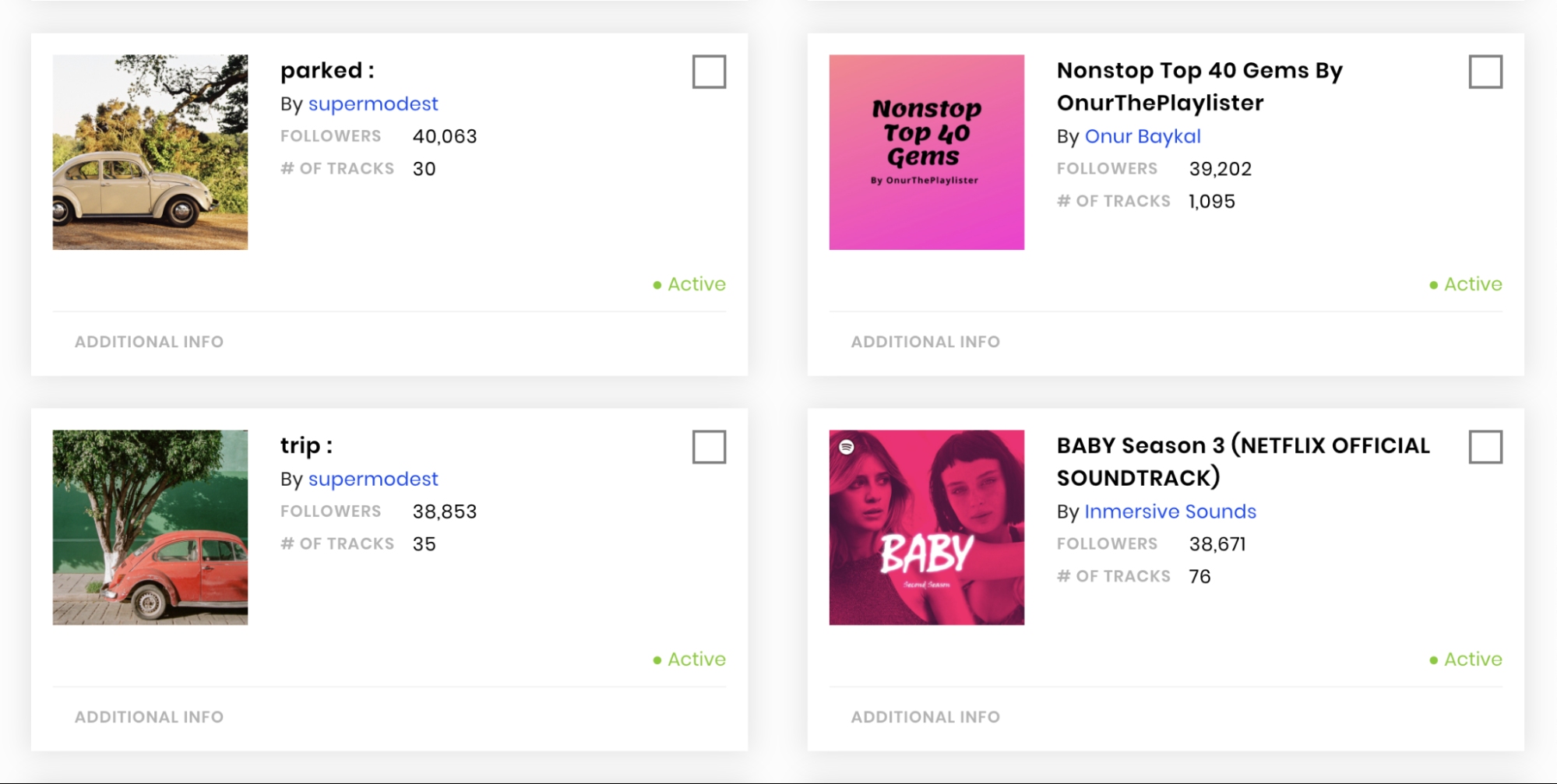 Daily Playlists
Daily Playlists
These are websites that cut out the endless search for curators and the sinking feeling you get every time you draft a pitch and don’t get a response. Instead, you can simply use these services as the middleman and submit directly through their websites. Many of these sites exist online, but you can get the most bang for your buck on sites like DailyPlaylists, Groover, and Musosoup.
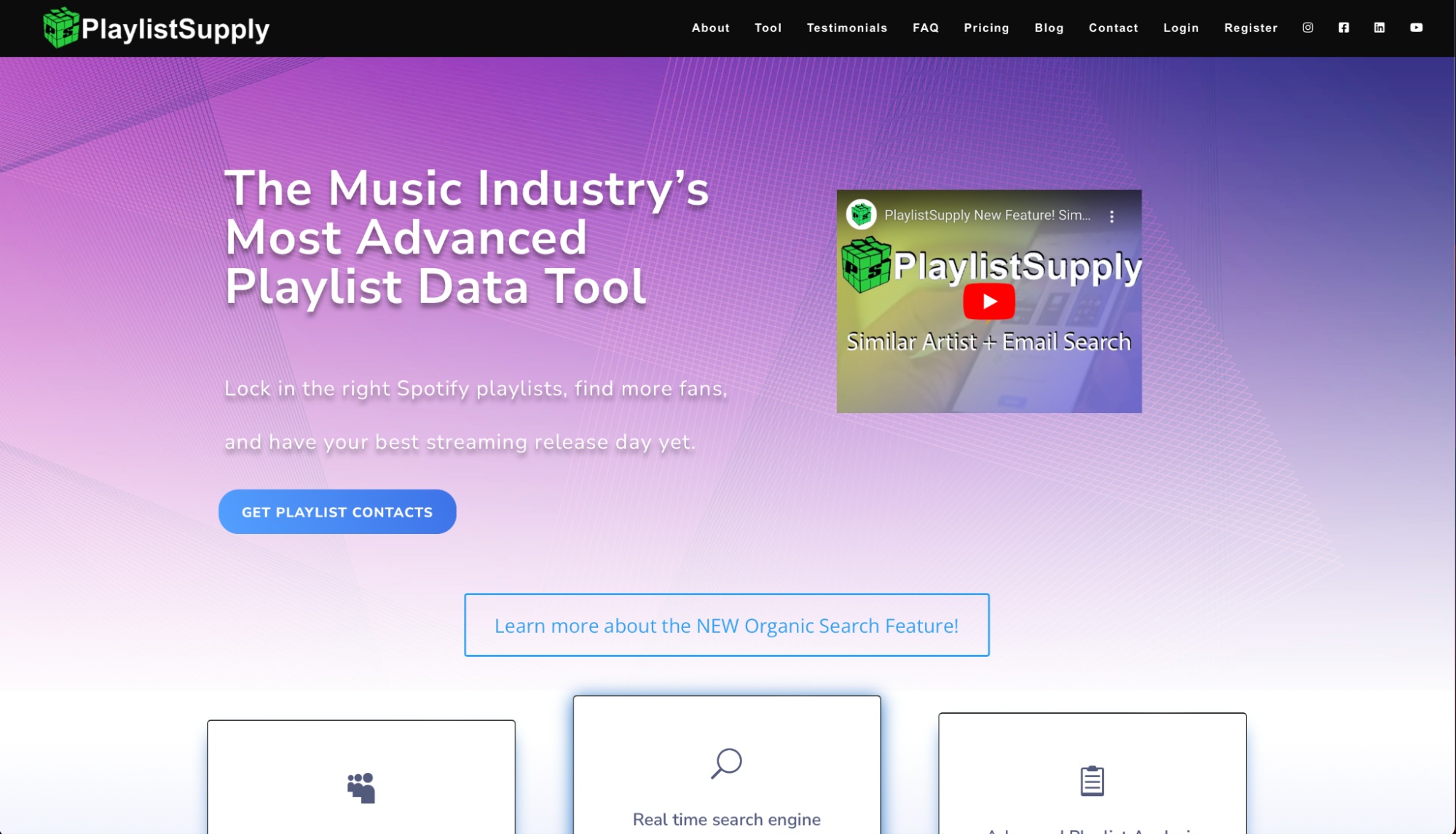 PlaylistSupply
PlaylistSupply
Playlist Supply can be an important asset to your search for curator contact information and playlists that your music would fit on. They do charge a monthly fee of $19.99, so it may not be worth it unless you are really releasing and pitching music consistently.
In addition, once the algorithm has taken notice of you, you can use the “Fans Also Like” section on your Spotify for Artists page to see what your listeners are also listening to!
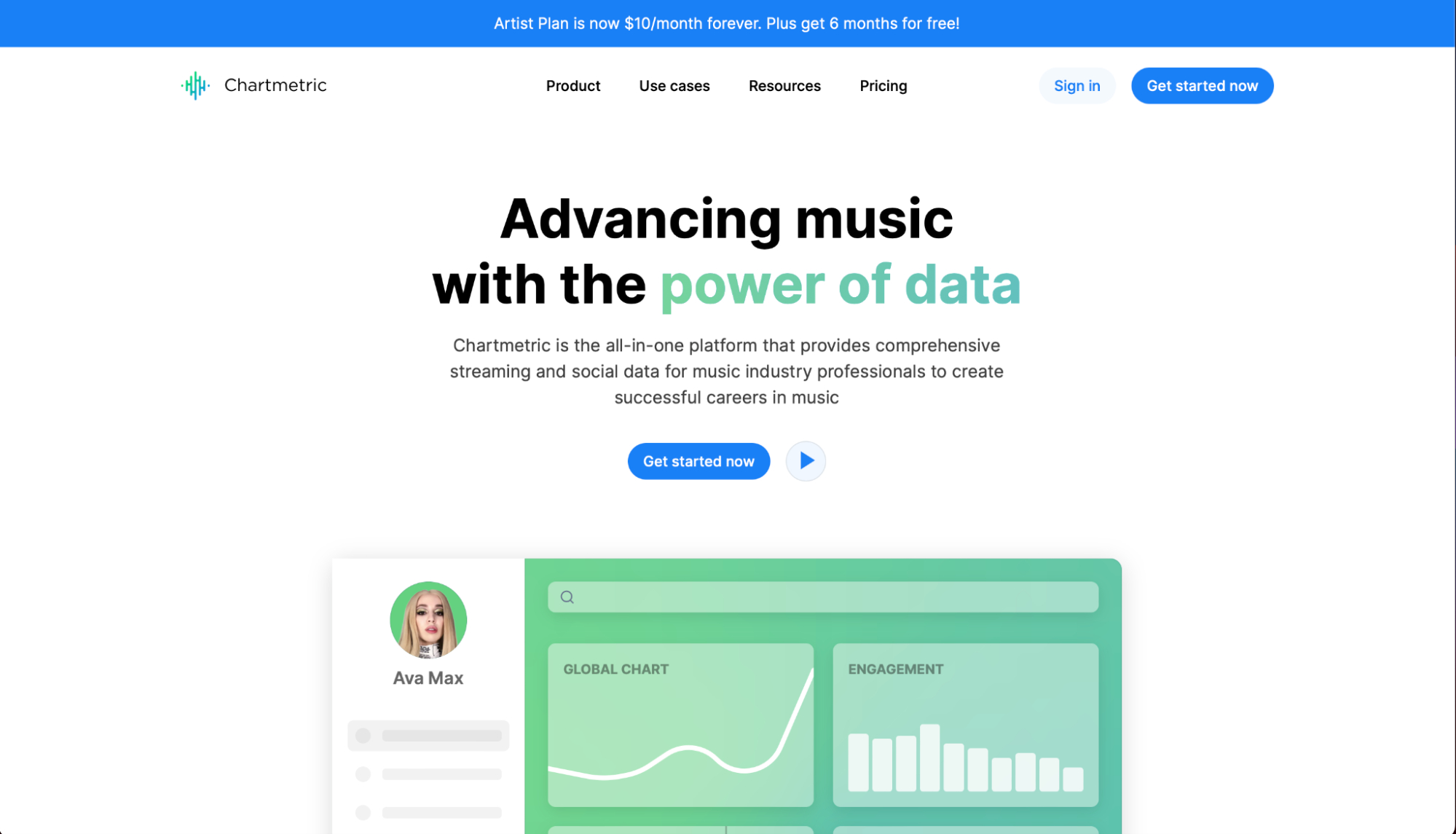 Chartmetric
Chartmetric
Chartmetric is another website that will provide lots of value for those who use it. On it, you will be able to see analytics for any and all artists. This can be so useful for independent artists because you can look at similar artists to see which independent playlists their music started on before moving up to editorial playlists. Since the Spotify algorithm will absolutely take playlist placement into account when calculating your popularity score, it’s good to know what path you should be taking. Taking the valuable information you can learn into account, $10 a month seems like a steal.
If you are looking for an alternative to Chartmetric, Soundcharts offers a similar service, and they do not require a credit card to get started.
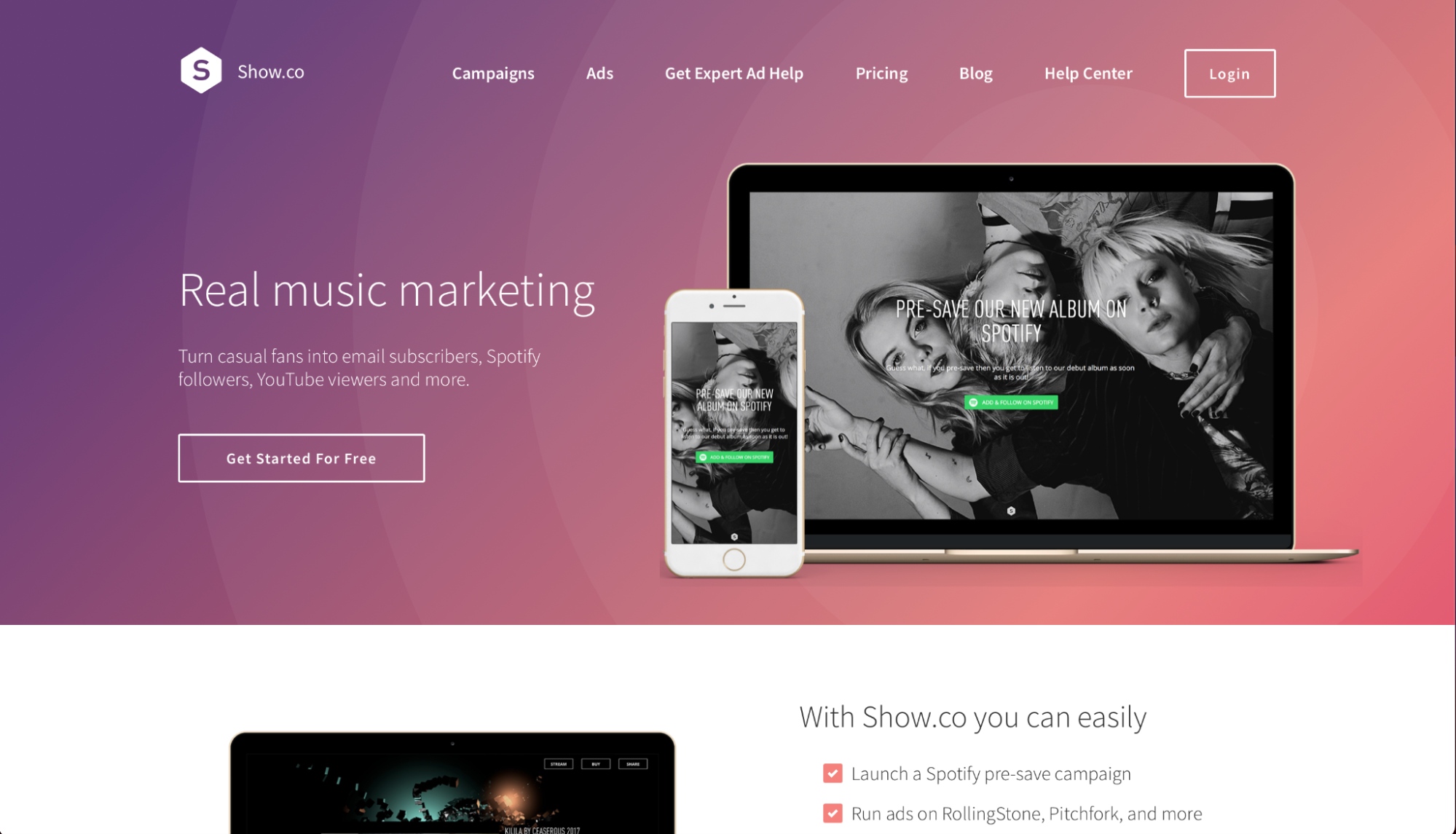 Show.co
Show.co
If you’re looking for a tool that is (almost) all-in-one, look no further than Show.co. They offer many of the services you would likely have to find and use separately, including analytics, campaigns, and more. For those who want to try it out, they have a free option, and their paid options start at $39 a month.
Toneden offers a similar service, with all of the features of Show.co and a free option that still proves to be incredibly useful – even with limited features.
As we all know, we are in the instant gratification social media era, where content is king. However, some artists may feel a little bit suffocated by the constant need to churn out content that may feel meaningless. In the worst cases, it can even start to get in the way of the music. Luckily, there are many free tools at your disposal to help ease the pressure of content creation:
If there is one word you remember from this article, it should be consistency.
Far and above all other things mentioned, consistency is key. So many artists give up before they’ve given themselves a real chance at success. You cannot expect your first release to be a smash success overnight. That said, there has never been a better time to be an independent musician. There’s a reason 53% of artists prefer not to be signed to a record label. So, don’t sweat the small stuff. If you remain consistent and use all of the tools at your disposal, you will see growth.
